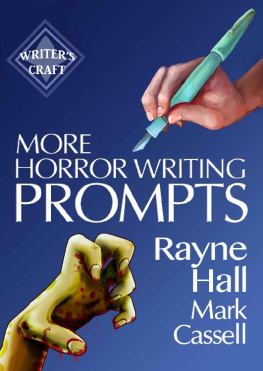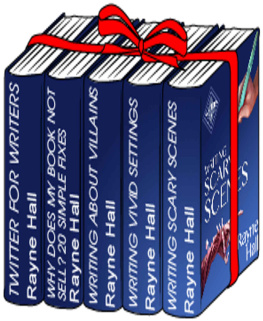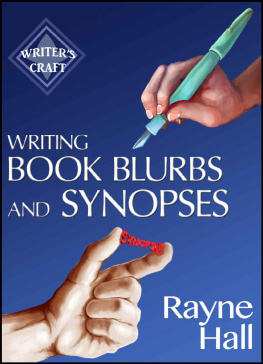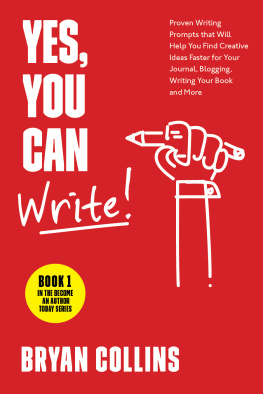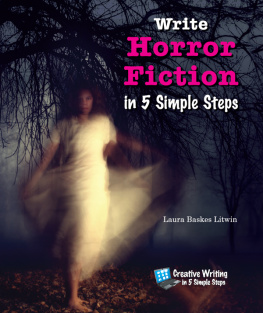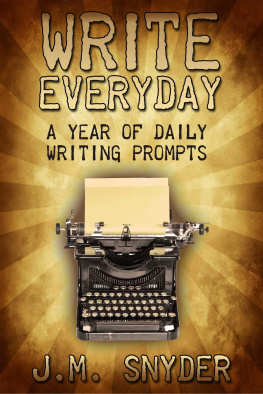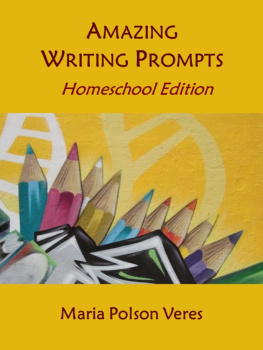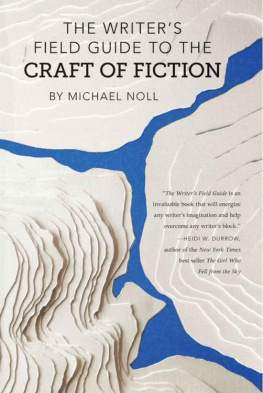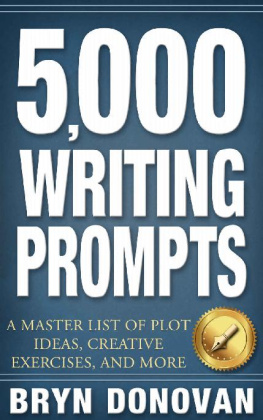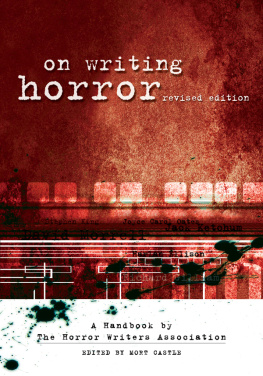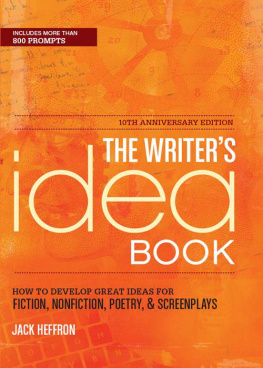MORE HORROR WRITING PROMPTS
77 Further Powerful Ideas To Inspire Your Fiction
by Rayne Hall
MORE HORROR WRITING PROMPTS:
77 FURTHER POWERFUL IDEAS TO INSPIRE
YOUR FICTION
by Rayne Hall and Mark Cassell
Book cover by Erica Syverson and Manuel Berbin
2018 Rayne Hall
May 2018 Edition
All images are Rayne Hall.
All rights reserved. Do not resell, reproduce or distribute this work in whole or in part without Rayne Halls written permission.
British English.
INTRODUCTION
You can use this book as a follow-on to Horror Writing Prompts, or on its own. This time, Ive teamed up with horror author Mark Cassell. Weve pooled our creepiest, whackiest and scariest ideas to inspire your creativity.
This book is crammed with fertile seeds for fiction that will thrill, disturb or scare your readers. Each prompt comes with a wealth of suggestions for how you can develop it to suit the kind of story you want to write. Plant those seeds into the rich ground of your own imagination, and watch them grow.
All you need is a timer (such as a stopwatch, kitchen timer or computer app), and a keyboard or pen. Many writers find that their creativity flows best when they write by hand, but the choice is yours.
Step 1: Set the timer to 10 minutes. Pick a prompt at random, and jot down whatever ideas it suggests. Some prompts have pictures, and you choose whether to write about the complete image or to zoom in on any aspect of the picture that intrigues you. Without evaluating the ideas or censoring your thoughts, just keep the pen moving on the paper or the fingers dancing on the keyboard. This process is called freewriting. Whenever your thoughts dry up, write What if...?, a question that jumpstarts writers imaginations. When the ten minutes are up, take a brief break.
Step 2: Read what youve written, and underline or highlight any phrases that excite you or pique your interest. Set the timer to 20 minutes. Now freewrite about the underlined phrases. Let your imagination interpret them. Your thought journey may circle around the original prompt, or lead in new directions either is fine. You can also ask yourself: How might this fit into a short story? How might this expand into a novel? How would this scenario play out in the fictional world Ive created for my previous books? What would my series characters think about this situation, and how would they respond? How could this be even worse? What excites me about this prompt? What experience does this remind me of? How does this relate to my job, my ambitions, my dilemmas, my childhood, my relationships, people I used to know? Which aspects arouse my emotions, and why? And of course, that Open-Sesame question: What if...?
I suggest freewriting about several prompts perhaps one every day before you decide which idea to develop into a work of fiction. One of them may visit you in your dreams at night, or make your body tingle all over whenever you think of it. Thats the one to choose. Start building a plot for it. Save the others so you can use them for future projects.
When reading the prompts, or when jotting down your spontaneous thoughts during Step 1, you may remember having read a story that deals with a similar topic, or wonder what happens if many writers use the same prompt. Dont worry about this. There are few completely new ideas in speculative fiction. I doubt any book exists that doesnt include some previously used components.
Indeed, many great works of horror fiction use the same basic premises to evoke primordial fears.
The key is to plant the idea seed into the fertile soil of your own imagination. What makes the story unique is the way you interpret the prompt, the context you place it in, and your individual author voice.
This method works well for getting creative juices flowing, for breaking through creative blocks, and for starting a new project.
Sometimes a suggestion will remind you of another prompt in this book, of an idea you had long ago, or perhaps even of a story youve already started to write. Thats good. Ideas are like pieces of a jigsaw puzzle. When several of them click together, a picture starts to emerge, and the story takes shape fast.
The prompts in this collection work for all kinds of horror fiction Psychological, Erotic, Splatterpunk and more though not every prompt will suit every subgenre. If you interpret the prompts freely, you can also apply them to related genres like Dark Fantasy, Steampunk and Thrillers.
If youre in the middle of a novel, this collection is less suitable. You may find my book Mid-Novel Writing Prompts (Writers Craft 23) more helpful.
Mark and I write in British English, with British spelling, grammar and punctuation. Weve used the gender pronouns randomly, switching between she and he.
Now lets get started. Do you have the timer set and the pen at hand? Ready... go!
Rayne Hall
HORROR WRITING PROMPT #1
What happened here?

Ideas you can use:
Where does this play out in the characters home, or in a hotel room?
Does this transformation happen suddenly, or did it come about gradually, getting worse each morning as the character brushes his teeth?
Does the distorted reflection happen only in this particular mirror, or in all mirrors and reflective surfaces?
What if the real person undergoes the same transformation as his mirror image, but with a lapse of several hours or days? Perhaps the mirror foretells what will happen to him overnight.
If this particular mirror is the only surface reflecting the altered image, is this character the first to whom this has happened, or does it happen to everyone who looks into this mirror?
What causes the transformation? The house? The mirror? The act of brushing teeth? Something in the toothpaste?
Although the character in the picture is an adult man, feel free to write about a woman or a child if you prefer.
HORROR WRITING PROMPT #2
The character finds creepy-crawlies in his room. When he describes them and asks for advice, people make fun of him, because those critters are safe and not to be feared. Embarrassed, he puts up with them, and tries to show no fear, even though they multiply rapidly.
Only when his room is full of them does he find out that these particular creatures are not the harmless variety, but lethal.
Ideas you can use:
What kind of creepy-crawlies bugs, centipedes, millipedes, spiders...? Choose a type of critter that youre familiar with, so you can describe its behaviour.
If youre brave, write about a type of creepy-crawly that creeps you out, because your own fear will give your writing deep veracity.
Where does the infestation happen in the characters home, or in a place where he stays temporarily, such as a hotel room or a secret refuge?
Whom does he consult initially neighbours, friends, a lover? Why does their mocking disdain affect him so?
Show how he tries to overcome his aversion to the creatures, how he fights to overcome his fear.
Show how they get worse and worse, either in number, in size or in behaviour... or possibly all three.
How does he find out that they really are dangerous? Does a local tell him? Does he find the information in a news article or on the internet? What if a friend from back home texts him, I hope youre having a great time in such-and-such country, and take care to stay away from the deadly such-and-such bugs with a link to an illustrated news report about a rare lethal species that has been sighted in that country, with a serious warning not to stay in the same room as one. And the character is trapped in his room surrounded by dozens of those.
Next page
